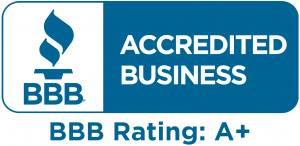Your call to an electrician could be for any of a multitude of reasons. People contact electrical contractors for everything from wiring installation in newly constructed or newly-renovated homes and buildings, to the installation of new ceiling fans, to home security system installation. Without a doubt, we’re an electric-dependent society and becoming more so every day. The increasing number of new electrical installations reflects this fact.
Often, people call us at Stapleton Electric because they’re worried about electrical fire or shock after experiencing flickering lights or faulty receptacles. Aside from immediate safety issues, most people call on us for installation of some type. But even when we’re installing or upgrading for reasons of style or practicality — such as creating visual appeal with landscape lighting or installing contemporary new electrical fixtures in a kitchen or living area — safety is always our primary concern.
Even small projects require compliance with the Canadian Electrical Code, the “rulebook” for the safe installation of wiring. The code’s purpose is to protect people and property from the danger of electrical malfunctions.
The electrical code is always fluid. What was acceptable and legal yesterday is not necessarily compliant with today’s minimum standards. For example, kitchen wiring installed ten years ago doesn’t meet today’s electrical standards and could be unsafe. In fact, there are installation standards for every room in your home.
Here are a few:
KITCHENS
- Most countertops receptacles must be GFCI (ground fault current interrupter) type, and none of them can be more than 20 inches above countertops. (There are exceptions for the physically disabled and for islands or peninsulas where this is not possible).
- Receptacles must be installed above all countertops that are 12 inches or wider.
- Face-up receptacles aren’t code-compliant.
- At least one receptacle should be installed on islands or peninsulas.
BATHROOMS
- GFCIs are the only type receptacle that can be installed in bathrooms.
- There must be a receptacle within 3 feet of the outside edge of any sink basin.
- As with kitchens, no face-up outlets are allowed on countertops.
- There must be at least one separate 20 amp branch circuit for high-wattage devices like hair dryers.
GENERAL AREAS
- There should be wall receptacles every 12 feet.
- Receptacles should be on any wall space that is more than 24 inches wide.
- Hallways more than 10 feet in length must have at least one receptacle.
In addition to room-by-room requirements, the electrical code also has mandates for the installation of electric vehicle supply equipment (EVSE) outlets due to the increasing popularity of electric vehicles. The EVSE-related requirements ensures that the total load doesn’t exceed existing service capacity. Options include increasing the service size, or the installing a monitoring system to ensure the overall load doesn’t exceed the capacity of the existing service.
At Stapleton Electric, we comply with the Canadian Electrical Code on every installation and repair project. Even if you’re not planning new electrical installation right away, we recommend our Homesafe Inspection Package for your peace of mind to make sure your current installation is up to code.
We offer highly-rated electrical expertise you can count on for installation and repair. Get in touch with us here online or call 778-985-9395.


